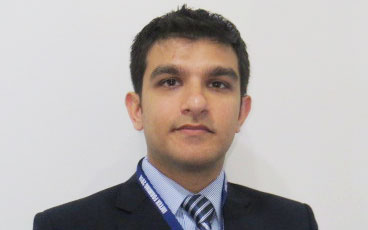Please brief us about your product ranges.
We basically have three verticals industrial division, Diamond processing technology and Medical segment. Our industrial division consist laser marking, laser cutting, laser micromachining, hardening machine. Also, we have recently launched press brake for sheet metal applications. Under Diamond processing division we have many sophisticated technologies and we are the world’s largest for diamond processing machine manufacturer. We also have special laser machines for medical applications.
India is home to several global laser machine manufacturers, how do you tackle competition? and what are the other challenges?
We are the largest laser system manufacturers in India. We started the manufacturing of laser marking machine in 1990 and laser cutting machine in 1994. During 1994, the number of laser cutting machines (in India) was just five, all of them were imported, sixth machine was manufactured by us. It was a CO2 laser cutting machine. Later, we started our research on fiber laser and in 2003 took a big decision, we invested hugely in fiber laser technology and developed it. No one was aware about the fiber laser cutting technology until then, today there are many companies that are coming up with fiber laser cutting machines. We were the only ones during 2007 IMTEX who showcased fiber laser technology. We can proudly say that we are the pioneers for fiber laser cutting technology and the first manufacturer of fiber laser machine in the world.
Yes, we faced some challenges as the adoption rate of such technologies was not so good. There was lack of awareness, technology was new and being an Indian company there was lack of trust, but it’s not the same today. People have understood that this technology is there for the future. Today there are foreign companies adopting the technology and following the Indian way.
Any perception challenges that you faced or still facing?
Definitely. We had a mind set and understanding that only Japanese or European companies can provide good technology. But we have invested a lot in R&D, almost 10-12% of our revenue goes to R&D activities and management programmes. We have adopted some of the best manufacturing practices, including lean manufacturing. It shows that we use up-to-date machines, follow manufacturing practices like any other Japanese and European companies. But the mind set is still the same, though I am sure with time it will change. Our customers are a satisfied with our machines.
What per cent of your revenue comes from export?
When it comes to the industrial division, export would be around 15-20%. We have exported to the US, Canada, Russia, Poland and few more European countries.
Indian companies look at the cost than the technology, how aware is the industry when it comes to laser technology?
There are two different kind of buyers, one who are looking at the cost and other who are looking at quality products. At SLTL we have a mix of both, we have technology that is equally good or better and price wise at par with the technology when compared to our western counterparts.
Automotive industry has been the biggest market for machine tools. How has current downfall affected the industry?
Yes, it has affected the industry to a certain level. Automotive industry is one of the key end users of the machine tool be it metal forming or metal cutting. But in the recent time I would say there are two more emerging segments that are creating good demand – agriculture and infrastructure. When we talk about infrastructure, escalator, lift, construction equipment, etc are using laser machine for better productivity, while in agriculture it is kind of a shift from the conventional approach to manufacture equipment to the use of high end laser technology.
What are the customers demanding today?
There are two types of demand – first who are buying as a job shop who will be providing service to other and second for in-house use. For in-house purpose, they are going beyond the conventional methods and opting for latest technologies like laser machine. There is also a great market potential for job shop and its going to increase significantly. Reason being, many people these days want to outsource, they don’t want that extra burden.
What about the competition from countries like Taiwan, Korea, Singapore and China?
Yes they have grown, but I have not seen them very much aggressive in the Indian market. India needs more of a cumulative growth, if that is there the competition will also be healthy. If the country lacks overall growth, that may lead us to a difficult time. In terms of European and Japanese companies, they have entered in the Indian market long ago, so yes they have certain amount of customer base.
How many Sajanand machine running in the industry?
Whan we talk about fiber laser cutting machines, around 65 machines are being used in the industry. In terms of generic laser machines like CO2, marking, medical, etc there are more than 6,000 machines working in the industry. Out of them around 3,500 machines are being used in Surat- one of the world’s most densely populated city in terms of laser technology.
The future of this technology in India…
Today, people are very much aware about various things because of the internet penetration. Now a days, customers do not only rely only on word-of-mouth publicity, they do their own research on the internet. This gives them a transparent overview, so there is good scope for this machine. When we talk about forming machines, there is a huge potential or opportunity as the forming industry is not that large as compare to the metal cutting industry. Forming technologies are yet to emerge, today with the infrastructure getting better and agriculture industry growing, everyone is looking for technologies that can help them grow, so the forming industry has scope of growth.
nishant@mfgtechupdate.com


